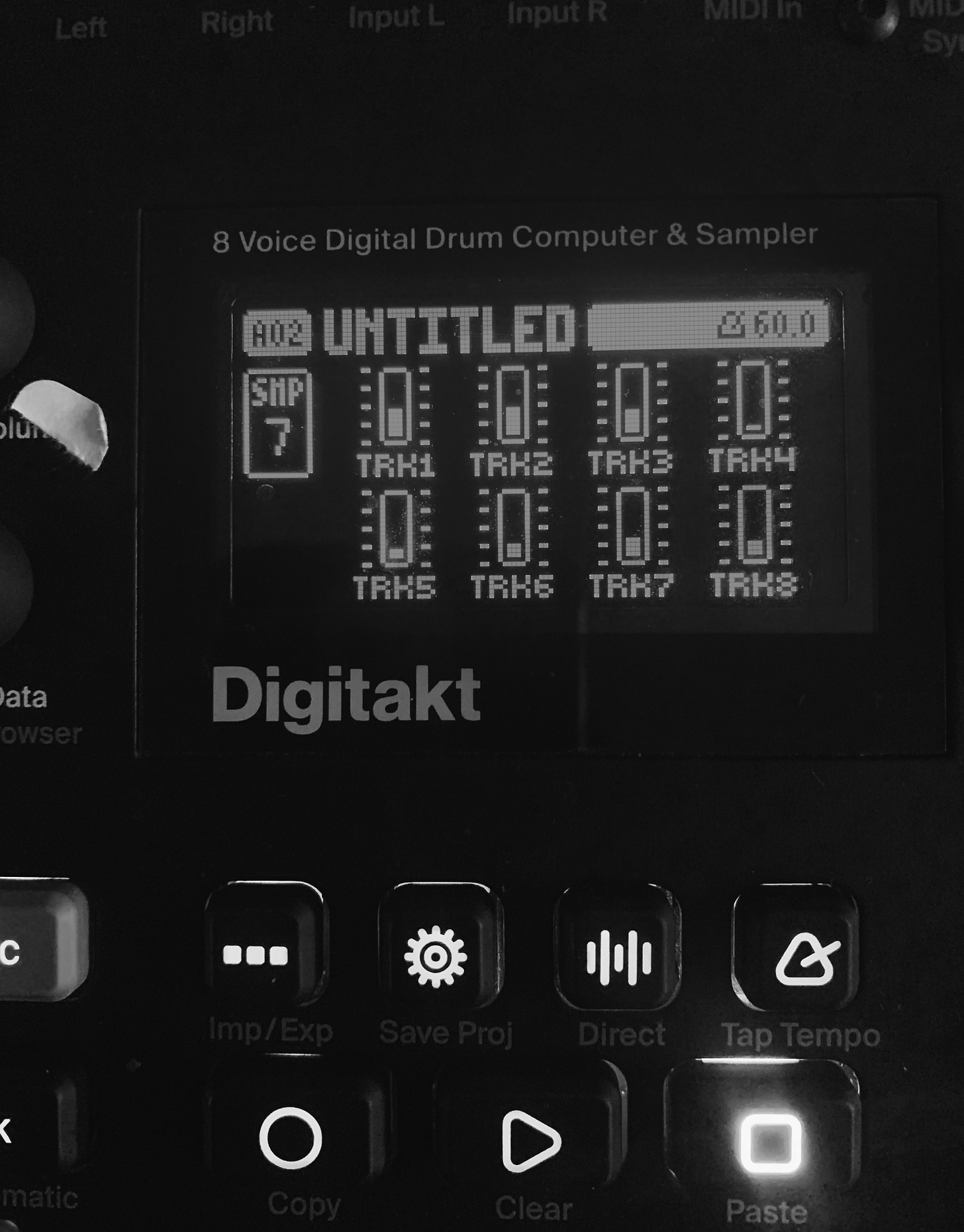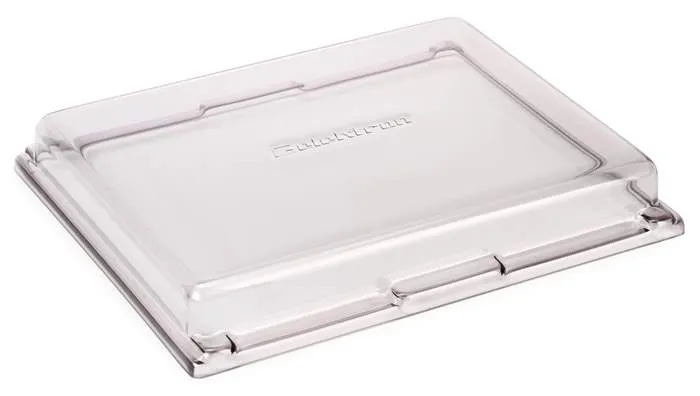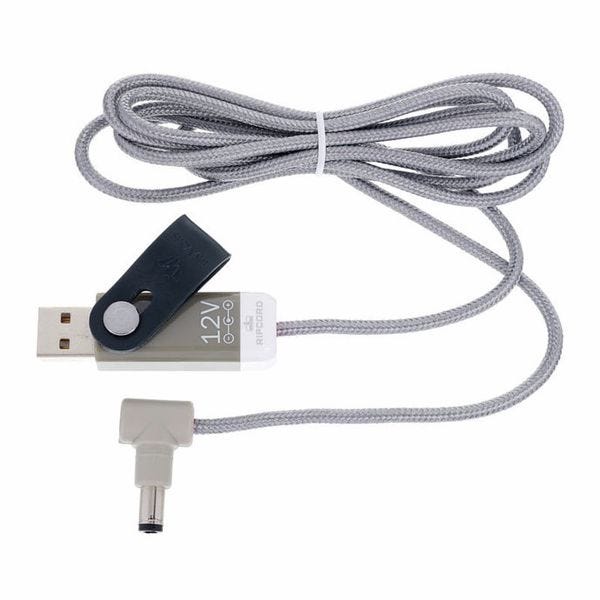A couple of years ago, I told myself I’d try to come back to hardware. I purchased a Digitakt, said I would really learn it and turn it into an extension of my music and myself. That meant finding a way to make it sound “ambient”, despite it being marketed as a “drum machine”.
First it was a love/hate relationship but then after looking on youtube and talking to fellow musicians, I finally find plenty of joy in using something for what it’s not designed for.
So below are some notes, habits and tests I have compiled along the way. This is only my recipe and I’m sure there are many ways to use the machine.
Just to clarify, I have a DT OG and not DT2, as I’m not feeling any need so far for more tracks, stereo or fx.
Repurposing a tool to fit your own needs
I have recorded 2 albums entirely with the DT. These albums are sample based and sounds were imported to the machine from various sources via usb. Everything was then built, played, mixed and mangle inside this box. Stereo stream out recorded to Ableton for final eq.
Transforming the Digitakt into an Ambient box
The Elektron Digitakt, can be repurposed as a live ambient and performance tool.
I mostly use it for soundscapes, textural exploration and not as a traditional sequencing box. Now I even tend to record sounds directly to it and use these samples as the base.
Usually I have two templates in use:
TEMPLATE 1 / LIVE OR STUDIO TEMPLATE
Tracks 1 & 2 for main sound elements.
Tracks 3, 4 & 5 for field recording or sonic glitches.
Track 6 for bass or rythm.
Track 7 & 8 are for drones (usually simple wave forms or noise from the original sample pack of the machine. So much can be achieve with stock samples believe me).
TEMPLATE 2 / EXPLORATIONS OF SAMPLES
Tracks 1, 2, 3 & 4 are using the same sample but with different eq / filter / LFO / length / pitch and so on.
5 & 6 (and 7, 8 if needed) are slots for resampling and adding variation to the base (yes you can resample directly from Main out to a specific track).
“AMBIENT SETUP” TIPS
A - The sequencer is not used (I will add a note for “trig less” trig at the end 1 ); instead, my samples are sustained infinitely. For this I’m using the following techniques:
Sample decay to infinite (sound continues playing after a single trigger)
Set the sample to Loop (forward or backward), it will restart seamlessly.
Add sample slicing for a kind of micro-looping & granular fx (slicing mode divided into 64 slices). This will allow micro-looping and moving the play head to create a sense of granular synthesis. This technique can provide ever changing organic textures and new motifs.
B. Processed sounds can be isolated from the dry signal, creating an effect-only texture. Just go to the main menu and bypass the master output for the selected track. Send the track output only to the delay and reverb (wet signal only / see below).
Use filtering and tuning within the FX chain to further shape the sound.
Reverb-drenched delays create an expansive and ever changing soundscape.
C. Adding movement with LFOs (slow rate). Modulate volume, filter, panning, pitch or tuning for evolving sounds.
D. Field Recordings & Textures
Incorporate field recordings, noise, and organic textures. You can use backward loop play, slicing or fx processing to transform raw recordings. You can even connect an Ipad via USB and use it as a large effect box. Filter & pitch turn static recordings into dynamic elements.
E. Focus less on arrangement and more on sound interaction. Embrace the improvisational and discovery aspect (even trials and errors). Treat the whole system as a mixing console, balancing frequencies and textures.
NOTES
USB connection can be a good way to “spice” your Digitakt and to add more variation especially for live usage. On top of this you have midi In/Out and stereo IN to plug other machines, pedals… For microphone input, I’m using my Zoom H5 to route audio captured and send it out to connect to my DT. There is a page on the Elektron box dedicated to external IN signals.
The general Mixer page is your friend
Digitakt can be a nice travel companion with the following accessories:
protective cover (with handmade elastic tape to keep everything tight)
12V Power to USB adaptor to run the DT with a portable rechargeable battery
Make it new:
If, like me, you have the DT for a long time, chances are that the keys are sticky.
You can order from Elektron a pack of new keys for 30 euros and tada! Brand new Digitakt :)
So to wrap up this article, I would say that until today I’m still enjoying my DT and still learning tricks. It is now a productive & central tool to my studio and live practice. I hope this article will help you and I guess it can be transposed to other hardware too.
As always, I’m sharing some audio snippets that I build yesterday with these techniques (raw and not edited as usual):
Old Yamaha piano (YPR6) into Volante sampled into Digitakt:
Wingie into Zoom H5 into Digitakt
Piano into Volante into Digitakt
Enjoy. Peace.
“Trig less” trigs concept (green trig and NOT red trig):
even if I don’t use the sequencer often, sometimes I like to add the “trig less” technique to change for example the pitch or some other parameters. This is helpful to make the sound evolve and feel less static, especially short samples. In a nutshell, the sequence is running but is not re-triggered every time a “trigger less” trig changes a parameter (fundamental difference between a Red trig and a Green trig).
See this good video below:







Wow... You have no idea how much I appreciate these posts.
In the last few years, since I started walking a new path with music, I’ve been discovering a thousand and one new things. I’ve learned to open my mind to new forms, textures, and different methods of finding inspiration.
On that journey, I remember coming across a Digitakt Mk1 very early on… and I wasn’t ready. Years later, I realized that while it was never going to fit for me as a “drum machine” or for creating pseudo-static sequences, it actually had a much broader use when explored as a “super sampler” triggering and modulating long sequences. The Mk2, with its stereo capability and 16 tracks, felt like having a monstrous tape looper—an excellent bass and an enveloping pad… While everything moves and nothing remains the same over time.
So I came back to it, and even though I haven’t been able to focus on music in the past few months for other reasons, I know it’s there.
Thank you again for your generosity and for keeping the excitement of learning and experimenting alive.